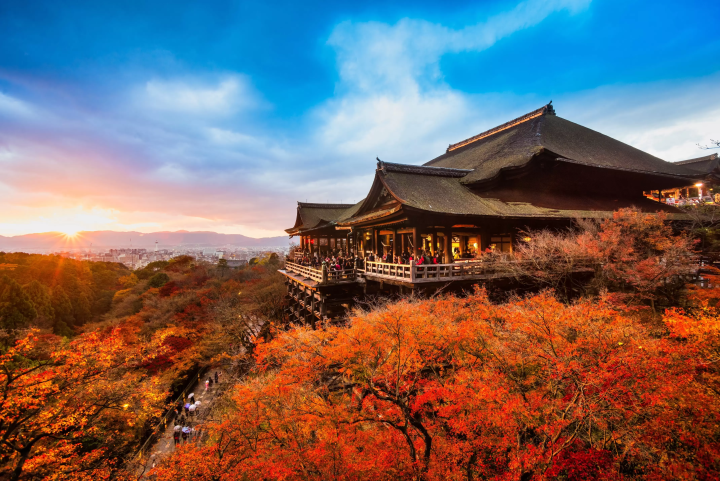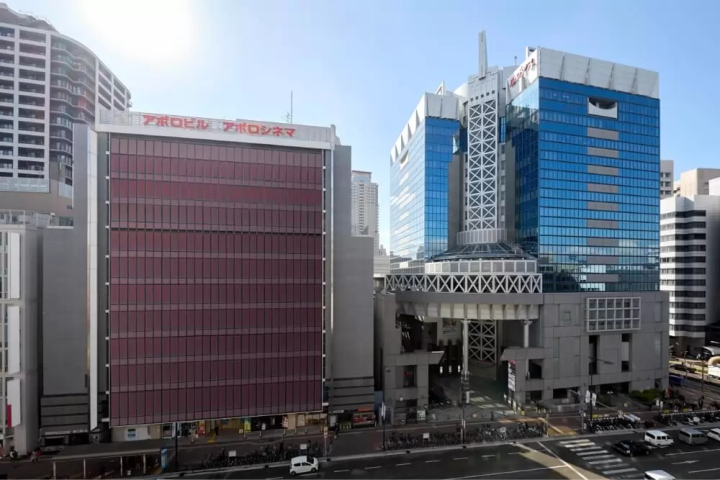Discover Hyogo’s Hidden Kyoto: Exploring Traditional Architecture in Tatsuno City

Exploring the traditional architecture and beautiful nature of Tatsuno City. A travel guide to savor the charm of this hidden gem of a town.
With tourism in Japan at an unprecedented high, you might think that cities across the country are just as crowded as Kyoto. But there are many areas that remain unexplored! When I visited Tatsuno, I felt like I was the only visitor. It was so quiet!

Photo caption: Walking past a retro house in Tatsuno City.
This is surprising. Despite being less than 30 minutes from Himeji, you hardly ever encounter any tourists and the locals I spoke to said they would love to see more visitors. For other beautiful places near Himeji, check out my posts on Ieshima and Fukusaki .
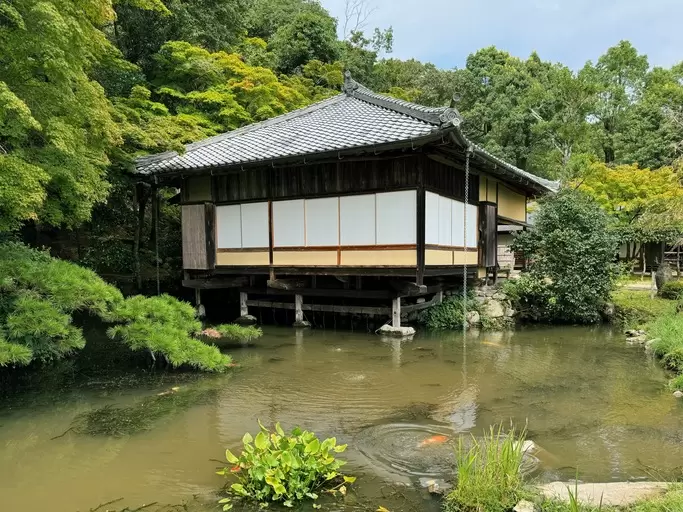
The tranquil scenery of Tatsuno Park
Tatsuno is well known for its seasonal visits. In autumn, thousands of maples create beautiful foliage scenes at the base of the mountains. In spring, locals enjoy the pale pink cherry blossoms around the ruins of Tatsuno Castle. Although these events draw many local tourists, Tatsuno is still a hidden gem for international visitors.
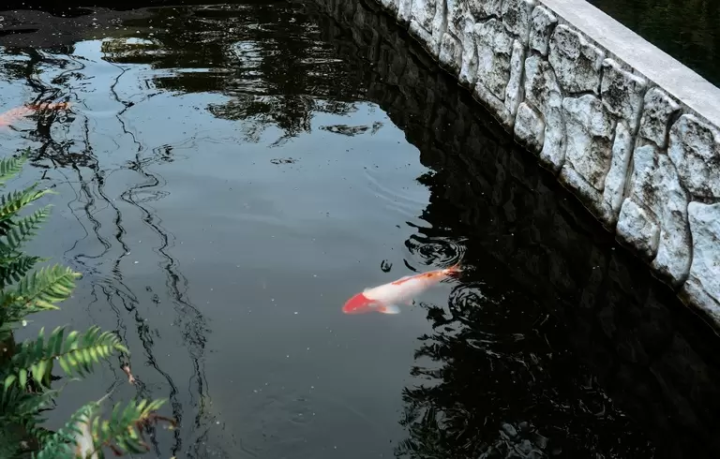
Carp swimming in a roadside waterway.
Perfect for a quiet and peaceful bike adventure, Tatsuno has much to offer, which we've compiled a list of below:
access
Getting to Tatsuno is easier than you might think! The nearest Shinkansen station is Himeji Station, which is served by the Hikari Shinkansen. From Himeji, simply take the Kishin Line to Hon-Tatsuno Station.

Along Tatsuno Street.
The most convenient way to explore the city is to rent a bicycle near the station. Sign up at the Tatsuno Tourist Information Center. Bike rentals (use the translation feature as the official website is only in Japanese) are available from 10am to 4pm and cost 1,500 yen for 3 hours or 2,000 yen for 6 hours. With the bicycle, we were able to quickly get to where we wanted to go.

Renting a bike is a great way to explore the city.
You can also take a taxi to the old town area, where the samurai residences and castle are located. If the weather is nice, it's a 20-30 minute stroll from the station to the area. For those who enjoy walking, a stroll through town is a great way to appreciate the details of the area's old houses.

The city has plenty of quiet spots where you can relax.
Expectations for Tatsuno City
Tatsuno city boasts an architecture similar to Kyoto and is home to many traditional houses, cafes, and small guesthouses. Here you can see how architecture from different periods in Japan has been well preserved, with buildings spanning over 250 years from the 18th century to the early Showa period (1926-1989).
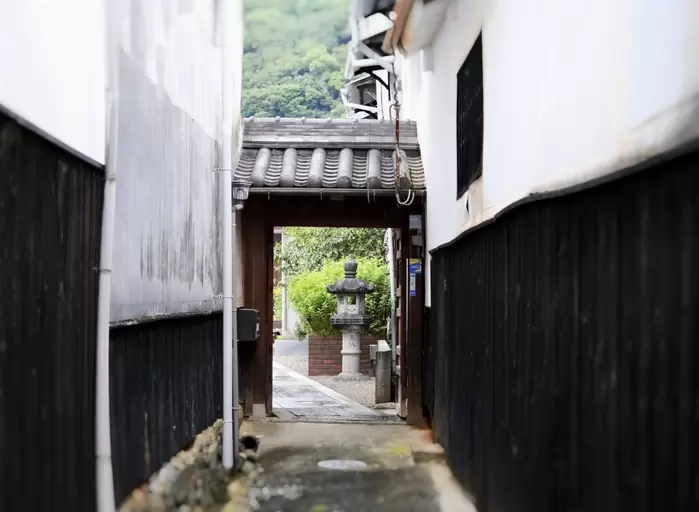
Tatsuno has many photogenic spots around its traditional buildings.
The locals are very open and friendly towards tourists and will warmly welcome you to the city. The area is also home to the largest soy sauce factory, so the smell of soy sauce fills the air around the city. Many cafes have soy sauce on their menus, so you can enjoy some creative soy sauce dishes.
History of Tatsuno
Tatsuno was originally part of the ancient Harima Province and was a key location on the Izumo Kaido, an important trade route, and during the Muromachi period (1336-1573) was home to Shiroyama Castle, the base of the Akamatsu clan.

Many streets in Tatsuno look as if time has stood still.
During the Tokugawa Shogunate (1603-1868), the area became the Tatsuno Domain. Tatsuno flourished as a castle town under various rulers, including the Wakisaka clan, who ruled for 200 years until the Meiji Restoration in 1868.

Samurai armor on display in a traditional house.
Known as "Little Kyoto of Harima," the old town is home to historic samurai residences and storehouses. Tatsuno was officially established as a city in 1951, and expanded in 2005 by merging with neighboring towns.

Wooden houses are often lost to fires and natural disasters, but Tatsuno's buildings remain standing to this day.
Tatsuno's relatively peaceful history and geographic location have helped preserve the old houses for which the region is known; a lack of wars, fires and natural disasters has prevented these mostly wooden buildings from disappearing.
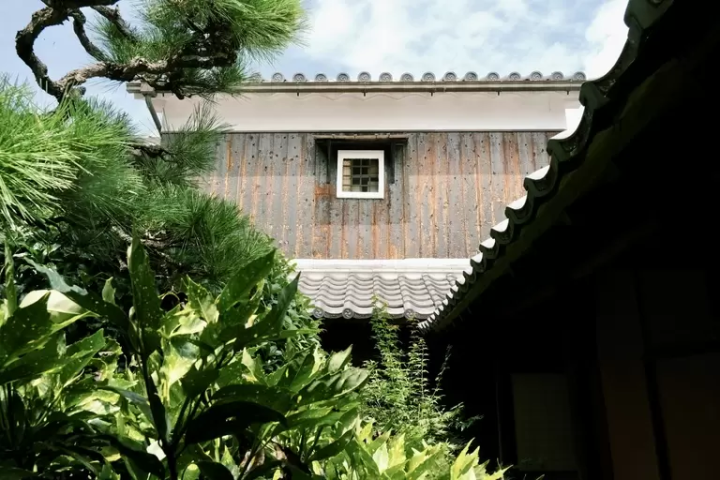
The roof tiles and windows vary depending on the era in which the building was built.
Older buildings can be identified by their design. Typically, buildings built before the Meiji period (1868-1912) in Tatsuno city are two stories tall and have low ceilings, while those built after the Meiji period have higher ceilings and eaves over 4.5 meters. You can also identify a building's era by looking at differences in roof tiles and window grilles. For a detailed explanation, the official Tatsuno website (use the translation function as the official website is only in Japanese) provides some great visual examples.
Visit the Usukuchi Tatsuno Soy Sauce Museum
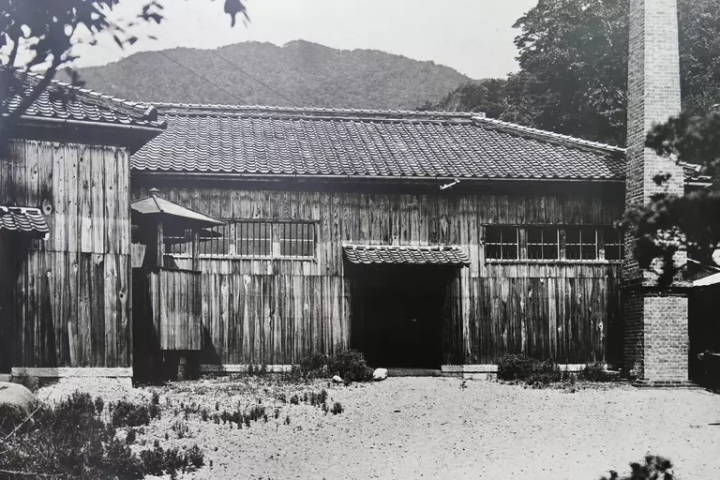
Photo caption: An old photo of the Usukuchi Tatsuno Soy Sauce Association.
After operating as a soy sauce factory for over 400 years, the Usukuchi Tatsuno Soy Sauce Museum became Japan's first soy sauce museum in 1979. It is within walking distance from the station and admission costs just 10 yen. Located at the former headquarters of Higashimaru Soy Sauce, which still produces soy sauce and other products today, this affordable museum is the perfect place to learn about the manufacturing process of Japan's most popular condiment, soy sauce.

Photo caption: The lobby of the Usukuchi Tatsuno Soy Sauce Museum.
The museum consists of the former headquarters and factory of Higashimaru Soy Sauce, a registered tangible cultural property. The factory specializes in producing light soy sauce, which differs from the dark soy sauce commonly found in Japan.
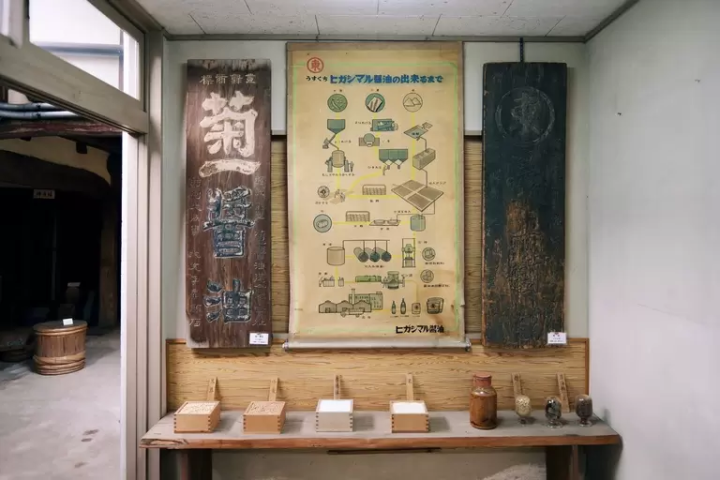
Photo caption: Traditional tools used in making soy sauce.
The museum has preserved part of the factory's interior and displays many of the original items used in soy sauce production. You can see the huge barrels in which the soy sauce was fermented, and you'll be amazed at how tall they are. There are also English explanations of the exhibits.
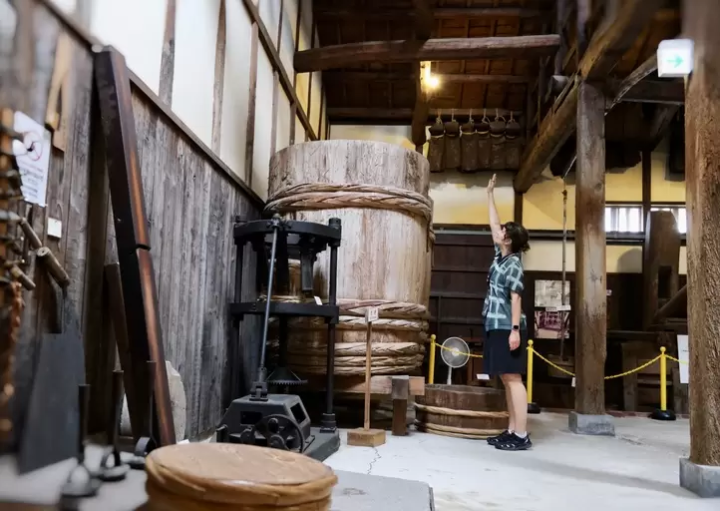
A barrel used to make soy sauce.
After viewing the exhibit, you'll stop at a small shop that sells a variety of soy sauces and soy sauce-flavored foods that make great souvenirs.
Soy Sauce Village Taisho Romantic Museum
After visiting the Soy Sauce Museum, I knew I had to try some of Tatsuno's many soy sauce flavored snacks! So I headed to the Taisho Roman Museum, which is right next to the Soy Sauce Museum.
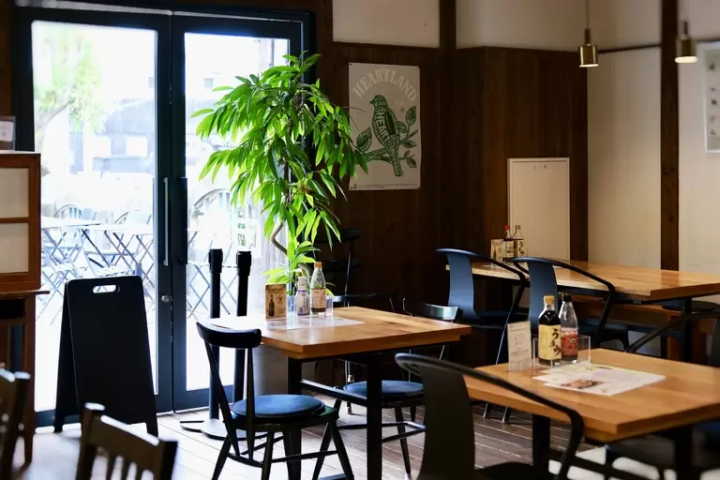
Interior of the Craterus
I decided to visit Kura Terrace Tatsuno, which is next to the facility, for a quick bite. Since I was planning to have sushi later, I decided to enjoy a soy sauce soft serve ice cream. It may sound strange at first glance, but the light soy sauce flavor went really well with the creamy soft serve ice cream!
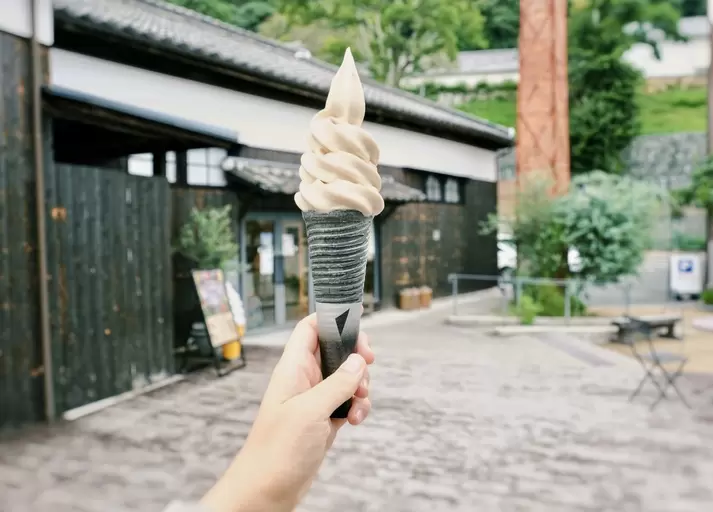
Soy sauce soft serve ice cream
Taisho Romankan is the former Tatsuno Soy Sauce Association office and brewery, which was renovated into a tourist information center in 2017. It's a great place to get information about Tatsuno and take a break. In addition to the cafe mentioned above, there is also a shop selling local products.

Photo caption: Exterior of Taisho Romankan.
The highlight of this facility is its exterior. Constructed in 1924, the building is an excellent example of the Western-style architecture that was popular during the Taisho period (1912-1926). The entire area is filled with historic buildings, so it's fun to wander around and enjoy the scenery.
Showa Retro Scenery Museum
From the full-sized architecture of Tatsuno's old town, my next stop took me to an entirely different era in Japan.
Located inside a traditional Japanese house that is over 200 years old, you'll find another world where time stands still, and a spectacularly large diorama. This handcrafted town is a meticulously crafted miniature depiction of a Showa-era streetscape.
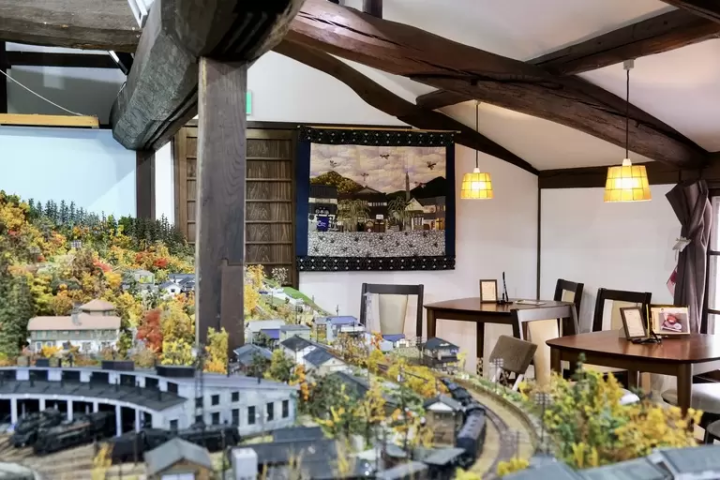
Inside the Showa Retro Scenery Museum
The details are fascinating, from the Chinese characters on the shop signs to the tiny laundry hanging out to dry on the balconies. You can borrow a magnifying glass to get a closer look. The lighting in the scene changes from day to night periodically every 30 minutes, and trains run every other 30 minutes.
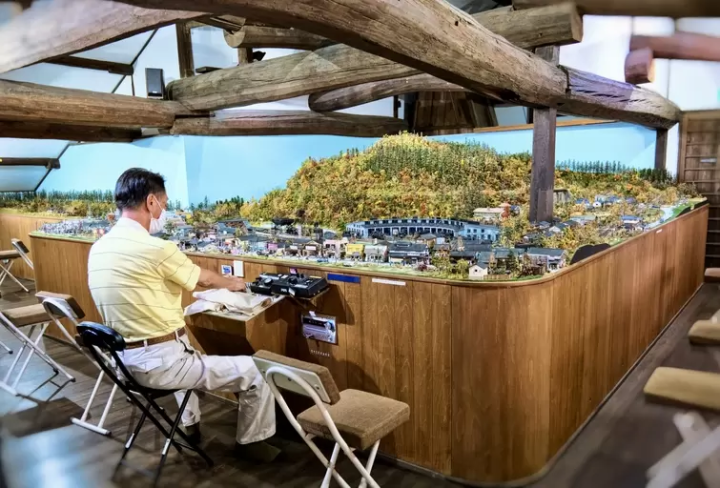
The owner of the museum that creates the dioramas.
It took the owner 13 years to create this diorama, driven by nostalgia for the Showa era and a childhood hobby of making small things. The owner used his own memories to recreate the nostalgic Japanese landscapes often depicted in the classic Japanese film "Otoko wa Tsurai yo" (Tora-san (Atsumi Kiyoshi) is a gentle wanderer who is always unlucky in love). Tatsuno was also the filming location for the movie "Otoko wa Tsurai yo: Tora-san Yuyake Koyake" and the charming landscapes depicted in the film have not changed much since filming in 1976.

The detail of Showa-era dioramas
This was for me one of the most interesting places in the city. I really enjoyed talking to the owner about his passion for miniatures. You can really see the love that went into creating the museum.
Sushi & Vegetable Kokoro
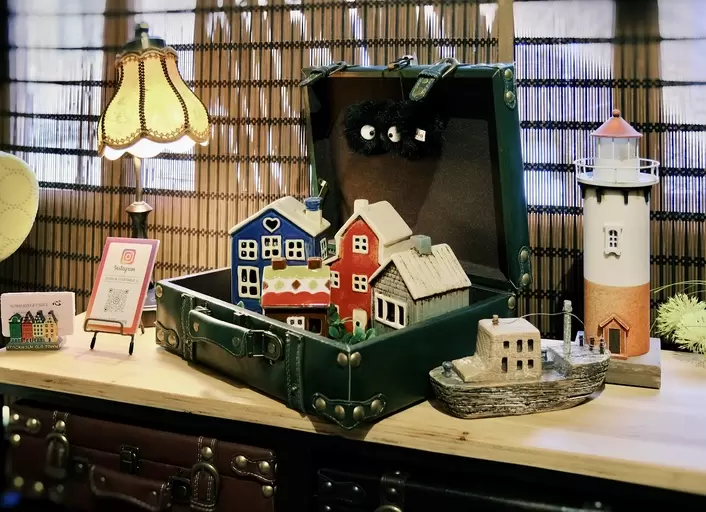
Photo caption: Interior of Sushi & Vegetable Kokoro
I was pretty hungry by the time I cycled from Tatsuno Old Town to Sushi & Vegetable Kokoro. Tatsuno is located between the sea and the mountains, which makes it easy to create a balanced meal that combines fresh fish and local vegetables!
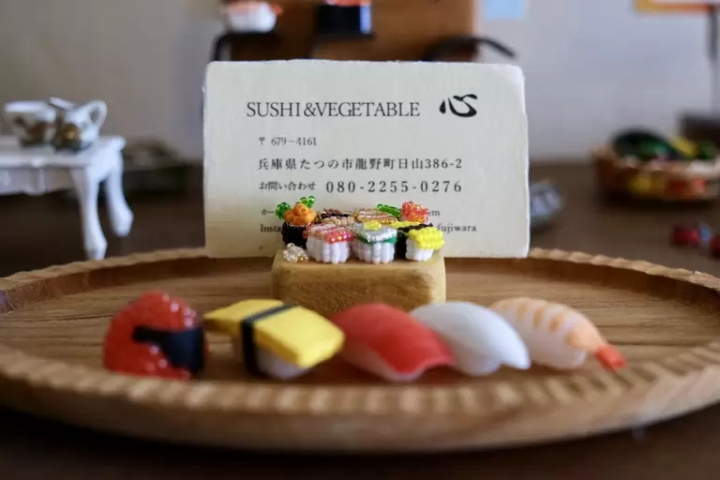
Photo caption: Small sushi food replica
Located in a converted traditional house, this cafe was surprisingly spacious! The warm wooden tones of the interior were very cozy and it was the perfect place to sit and relax for a while. The little displays and decorations around the restaurant were also really cute!

My sushi dish
I ordered the mini kaisendon and nigiri sushi set lunch, which consisted of fresh fish sashimi served on top of rice with a generous dollop of wasabi on the side. The kaisendon and nigiri sushi were fresh and filling, and after a delicious lunch I was ready to resume my exploration of Tatsuno.
Sweets and Coffee Saku
Even though I was pretty full from lunch, I couldn't resist visiting Saku Confectionery and Coffee. The entrance has a traditional gate leading to a building that dates back to the Meiji period (1868-1912). It's really amazing how Tatsuno has so many traditional buildings from different historical periods in Japan!

Photo caption: The entrance gate of Saku Confectionery and Coffee
The interior of the cafe was very cozy and I felt like I was being welcomed into a local Japanese home. The decor was like a living room in a home, which may have made it even more comfortable. I ordered a cup of coffee and enjoyed the atmosphere. The coffee was delicious and they had a good selection of beans. I chose the recommended option and was really impressed with the quality of the coffee.

Delicious coffee from Saku, a confectionery and coffee store
Bustling with locals, this cafe made me feel like I was in the heart of the community - it's also a great place for people-watching while soaking up the Tatsuno atmosphere.
Autumn in Momijidani and Tatsuno Park
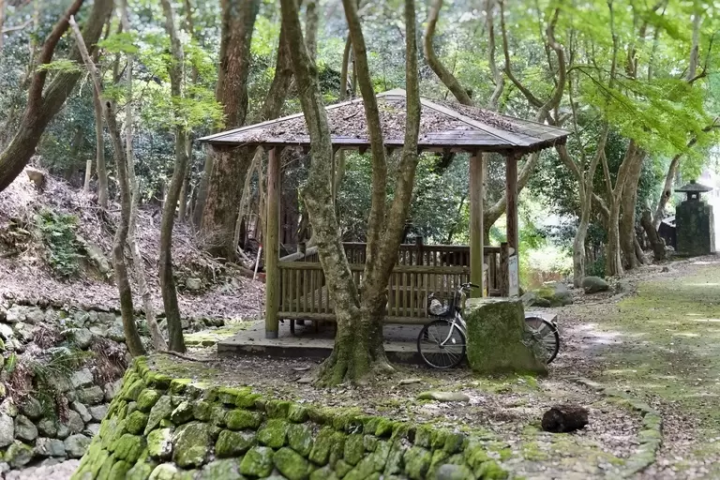
Photo caption: A gazebo in Tatsuno Park.
Tatsuno is less known to international visitors, but is famous in Japan for its vibrant autumn foliage and beautiful cherry blossom trees in spring. Even though I visited in summer, Momijidani was a wonderful place to walk and enjoy in the fall.
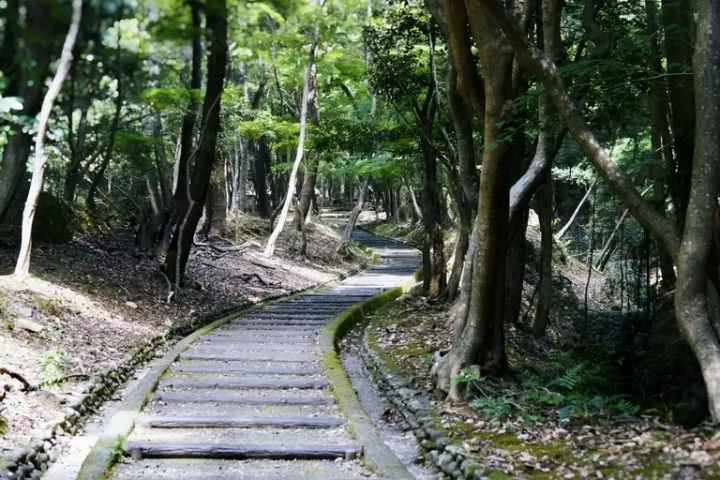
Photo caption: Momijidani Promenade
There are maple trees everywhere, so you can imagine how beautiful the park would be in the fall! But we had a great time walking under the vibrant green leaves, which softened the sun's rays. The park was quiet and we didn't encounter many other people. The inclines in the park are a bit challenging, so I recommend wearing good walking shoes.
Tatsuno Castle Ruins

Photo caption: Reconstructed buildings at the site of Tatsuno Castle
Tatsuno Castle is a mountain castle built on the top of a mountain, which became a flatland castle during the Edo period. Structures such as the Honmaru Palace, white castle walls, Tamon Tower, and Sumiyagura Tower have been reconstructed.

Photo caption: Sumiyagura
Admission is free, so you can take your time wandering around and enjoy the architecture's details. The area is also home to many cherry blossom trees, making it a great place to enjoy their pale pink blossoms in spring.
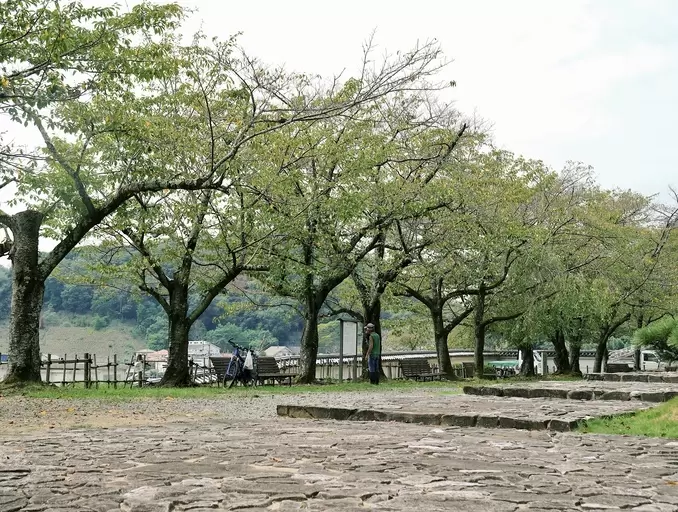
Photo caption: There are many cherry blossom trees within the castle grounds.
The current site offers amazing views of the city, and looking around at the wooden structures and old tiled roofs makes you feel like you've traveled back in time.

Photo caption: View of Tatsuno city
Final Thoughts
I enjoyed my time in Tatsuno! I could spend days exploring the cute cafes hidden in the old buildings, cycling through more parks, and trying dishes made with local soy sauce. I also hope to visit in spring, especially to see the beautiful cherry blossoms!
Tatsuno is still relatively unknown to foreign tourists, making it a great place to enjoy the colors of the fall and spring seasons without the crowds. This hidden gem is like a mini Kyoto, with plenty of traditional architectural charm without the crowds.
Welcome to Hyogo Hyogo is a gateway to the Kansai region, which nurtures the blessed land that connects the Sea of Japan, the Chugoku Mountains, and the Seto Inland Sea, as well as the blessed climate. There are many spectacular views that will catch your eye, such as Himeji Castle, a World Heritage Site that was selected as one of the 100 Best Cherry Blossom Spots, and the panoramic night view from Mt. Rokko. The world-famous Kobe brand, KOBE BEEF, which is synonymous with Tajima beef, is one of Japan's leading beefs, and the sake rice ``Hyogo Yamada Nishiki'' is a gem that will surprise your tongue. Arima Onsen is a famous hot spring, and Kinosaki Onsen has appeared in many literary works. Surrounded by nature, you can relax your mind and body. You can come across memorable sounds such as the thunderous sounds of the whirlpools of Naruto on Awaji Island, and the dynamic sounds of the fireworks festivals held in various places in the summer. In the herb gardens and botanical gardens in the prefecture, you will be healed by the gentle and pleasant scent of herbs and flowers throughout the four seasons. Enjoy a new journey in Hyogo that stimulates the five senses of sight, taste, touch, hearing, and smell.
The contents on this page may partially contain automatic translation.































![[50 minutes by car from Nagoya] Experience "sake and culture" in Tokoname](https://resources.matcha-jp.com/resize/720x2000/2026/01/13-255411.webp)


